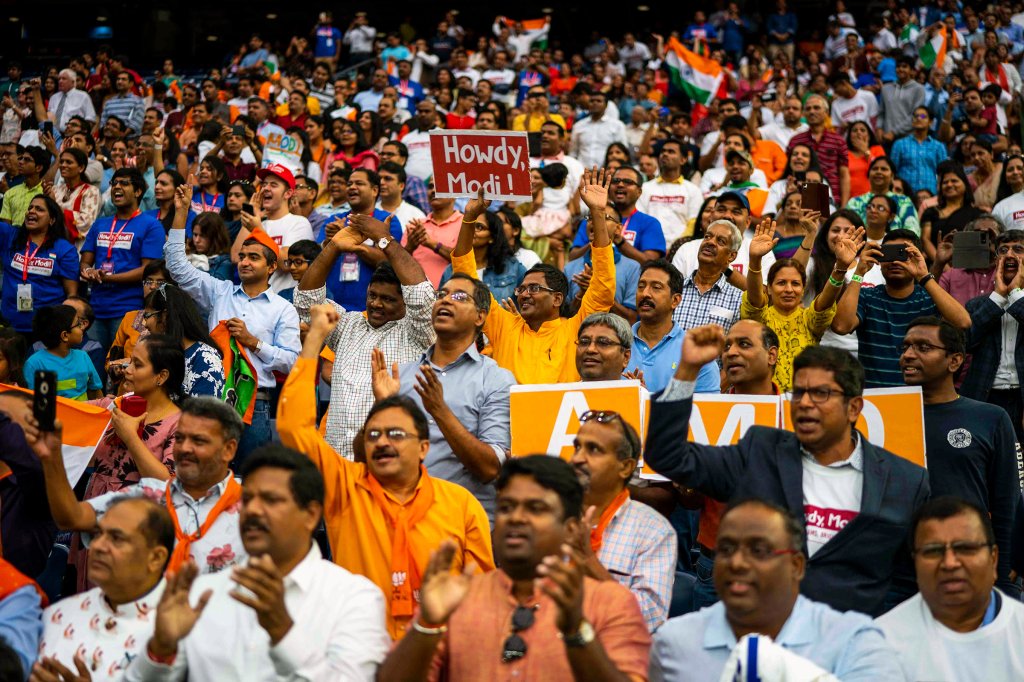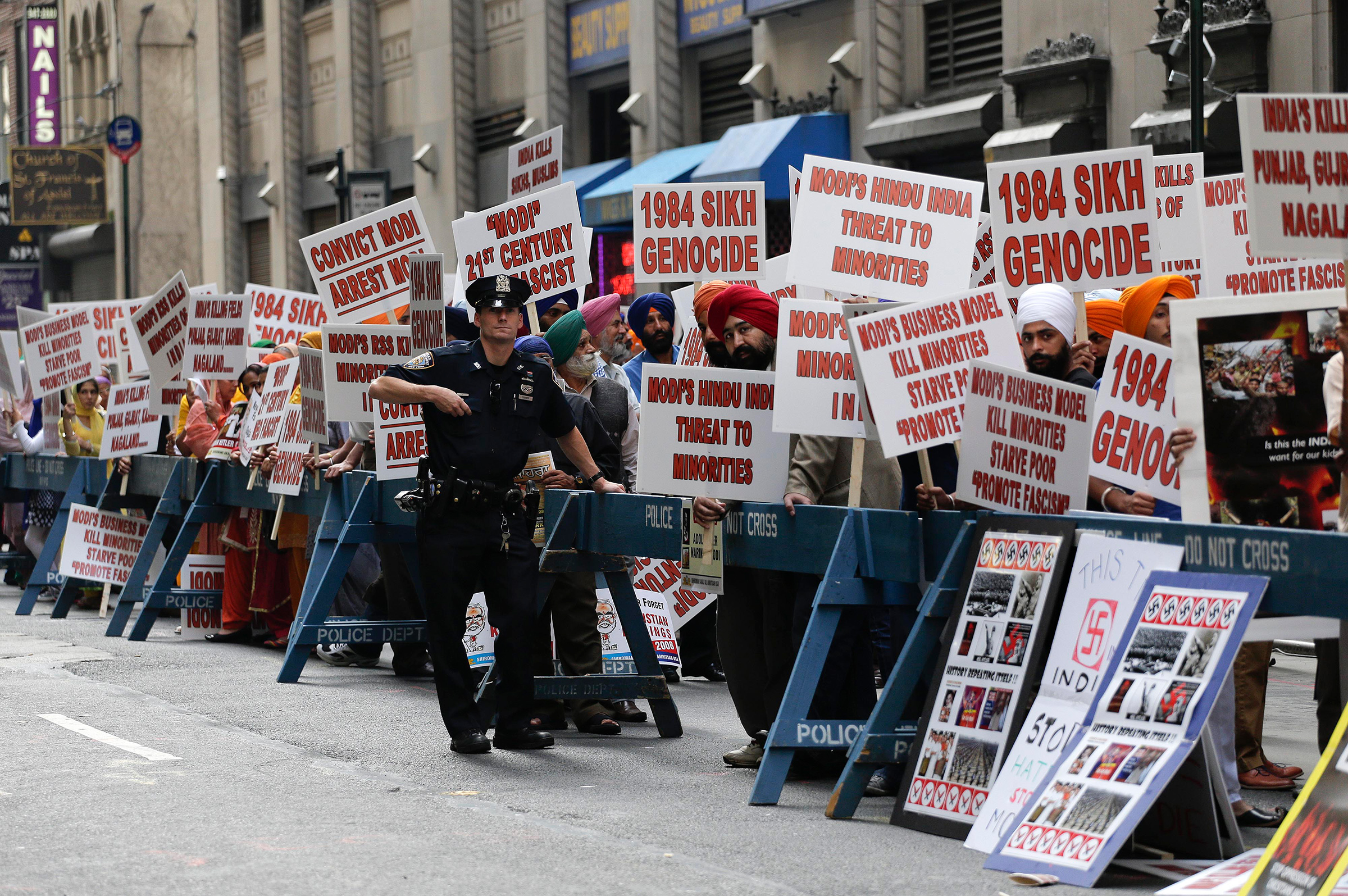Narendra Modi was once shunned by the U.S. In 2005, the then-chief minister of the Indian state of Gujarat was denied a diplomatic visa amid accusations he tacitly supported Hindu mobs during communal violence three years earlier that left more than a thousand people, most of them Muslim, dead.
But he is shunned no more. On June 22, Washington will roll out the red carpet for Modi, who will become just the third world leader (after France’s Emmanuel Macron and South Korea’s Yoon Suk Yeol) to be invited by President Joe Biden for a state visit and dinner, the highest of diplomatic receptions typically reserved for only the closest of allies. That Biden has chosen to fete Modi in this way is indicative of the “deep and close partnership” between their two countries, the White House said in a statement, especially on matters of foreign policy. But it is perhaps also emblematic of the growing visibility and electoral heft of the Indian American community.
“Indian Americans are a key constituency and a key vote in a number of swing states,” says Sara Sadhwani, an assistant professor of politics at Pomona College and a senior researcher at AAPI Data, which publishes demographic data and policy research on Asian Americans.
More from TIME
With a population of nearly 5 million, Indian Americans are the second-largest immigrant group and fastest-growing voting bloc in the U.S. today. Their impact is evident at the ballot box, where Indian Americans voted in record numbers during the 2020 presidential election. It is also becoming increasingly apparent in the halls of power, from Congress (where there are five Indian American lawmakers currently serving, up from just one a decade ago) to the White House (where Kamala Harris, who is biracial, made history as the first Vice President of Indian heritage). While every presidential contest since 2016 has featured at least one Indian American candidate, 2024 is poised to be the first race to feature at least two: Nikki Hayley, the daughter of Sikh immigrants from Punjab, and Vivek Ramaswamy, whose parents hail from Kerala.
Modi’s enduring popularity among the diaspora


The Indian American community’s political weight has not been lost on Modi, who has leveraged its influence time and again. When the Prime Minister first came to power in 2014, he was received by 20,000 spectators at a sold-out event in New York’s Madison Square Garden during a five-day visit to the U.S. It was the largest reception any foreign leader has received in the country after the Pope. “This is India’s century,” Modi declared, sending the wildly enthusiastic crowd into a frenzy.
In 2019, Modi once again received a jubilant reception with nearly 50,000 spectators at a “Howdy Modi” rally in Houston.
A survey on Indian American attitudes conducted by the Carnegie Endowment for International Peace and YouGov in 2020 found that Indian Americans held broadly favorable views of Modi, with nearly half approving of his performance as Prime Minister. Milan Vaishnav, director of the South Asia Program at Carnegie, says that this might be because the Indian diaspora sees Modi as “reclaiming India’s rightful status on the global scene.”
“India is now perceived to be both big and vital to geopolitics,” Vaishnav adds. Whether it’s hosting the G-20, being feted at the state dinner by President Biden, or even maintaining cordial relations with Vladimir Putin, he says that “many Indian diaspora members view this as a sign that India is back and experiencing a period of resurgence.”
The support for Modi comes despite the fact that while Indian Americans are hardly a monolith, they tend to vote for Democrats, rather than Republicans who more closely align with Modi’s right-wing Bharatiya Janata Party. As many as 74% of Indian American voters are thought to have backed Biden in 2020, according to a 2022 survey by AAPI Data, compared to just 15% supporting Donald Trump.
While Biden’s welcoming of Modi is widely seen in the context of Washington hoping to strike defense deals with New Delhi (most analysts tell TIME the reason for the visit can be distilled to one word—China—owing to the indispensable role of India in U.S. efforts to deter Chinese aggression), it’s also recognizing Modi’s popularity among a key American voting bloc. “In a time when the country has elections decided by four states and a margin of a few percent or less, every community really matters,” says Neil Makhija, the president of Indian American Impact advocacy group. “Ours really showed up in a significant way for [Biden] in Georgia, in Pennsylvania, in Arizona.”
Still, the Republican Party sees Indian Americans as a “natural constituency,” Vaishnav says. “They are well-off, and they’re business oriented. They care about low taxes, low regulation, and entrepreneurship, and they’re socially conservative. So I don’t think it’s a group that the Democratic Party is going to take for granted.”
A “very awkward” dilemma

Modi’s state visit also poses a strategic challenge to Biden. As a candidate, the U.S. President made defending human rights and democracy a cornerstone of his foreign policy agenda. Critics argue that his embrace of Modi, who over his two terms as Prime Minister has overseen significant democratic backsliding in India, is doing just the opposite.
The controversial Indian leader—who is poised to win his third term next year—has been accused of aggressively championing a Hindu-nationalist agenda that critics say reinvents the very idea of India as a pluralist, secular democracy to a religious, nationalist autocracy. Under Modi’s leadership, India has passed discriminatory laws that have alienated nearly 200 million Muslims; squashed dissent by jailing journalists, activists, and civil society organizations; and exercised judicial influence against his political opponents (notably, Rahul Gandhi, the de facto leader and scion of the Gandhi-Nehru family at the helm of the opposition Congress Party).
The U.S. has taken note. The State Department’s annual Religious Freedom Report, a survey of religious freedoms around the world, has expressed a number of concerns over India in recent years. It was notable that unlike last year, U.S. Secretary of State Antony Blinken made no mention of India in his speech this year, which analysts saw as a move to keep U.S.-India relations friendly ahead of Modi’s visit.
But according to Audrey Truschke, an associate professor of South Asian history at Rutgers University and a vocal critic of Modi’s Hindu nationalist base, the decision to host Modi shows that the “Biden administration does not care about human rights in India. If they did, there is absolutely no way that they would be hosting Modi right now.”
“It’s very awkward for the administration,” adds Michael Kugelman, the director of the South Asia Institute at the Wilson Center think-tank in Washington, D.C. “The strategic imperatives of partnership limit the options for the administration to bring attention to this issue—especially publicly, given that this Indian government does not take kindly to any type of external criticism of its internal policies.” The top priority for the administration, he says, will be to “avoid any drama.”
While the White House may want to keep the visit as anodyne as possible, the same doesn’t appear to be the case for the Indian American community at large. In the run up to Modi’s visit, pro-Modi groups have organized “Unity” marches in nearly 20 American cities on June 18, while those opposed to Modi’s presence plan to stage a rally near the White House to coincide with his arrival on June 22.
In an open letter drafted by Hindus for Human Rights, a Washington D.C.-based advocacy group, several Indian Americans, human rights advocates, and concerned allies have also urged Biden to “push back” against the Indian government’s “escalating attacks on human rights and democracy.”
By honoring Modi, Truschke warns that the White House could inadvertently encourage communal violence within the Indian American community. “This will make Hindu nationalist groups feel even more emboldened in the U.S.,” says Truschke, who herself has been on the receiving end of threats from far-right Hindu nationalists.
More Must-Reads From TIME
- The 100 Most Influential People of 2024
- Coco Gauff Is Playing for Herself Now
- Scenes From Pro-Palestinian Encampments Across U.S. Universities
- 6 Compliments That Land Every Time
- If You're Dating Right Now , You're Brave: Column
- The AI That Could Heal a Divided Internet
- Fallout Is a Brilliant Model for the Future of Video Game Adaptations
- Want Weekly Recs on What to Watch, Read, and More? Sign Up for Worth Your Time
Write to Yasmeen Serhan at yasmeen.serhan@time.com and Astha Rajvanshi at astha.rajvanshi@time.com